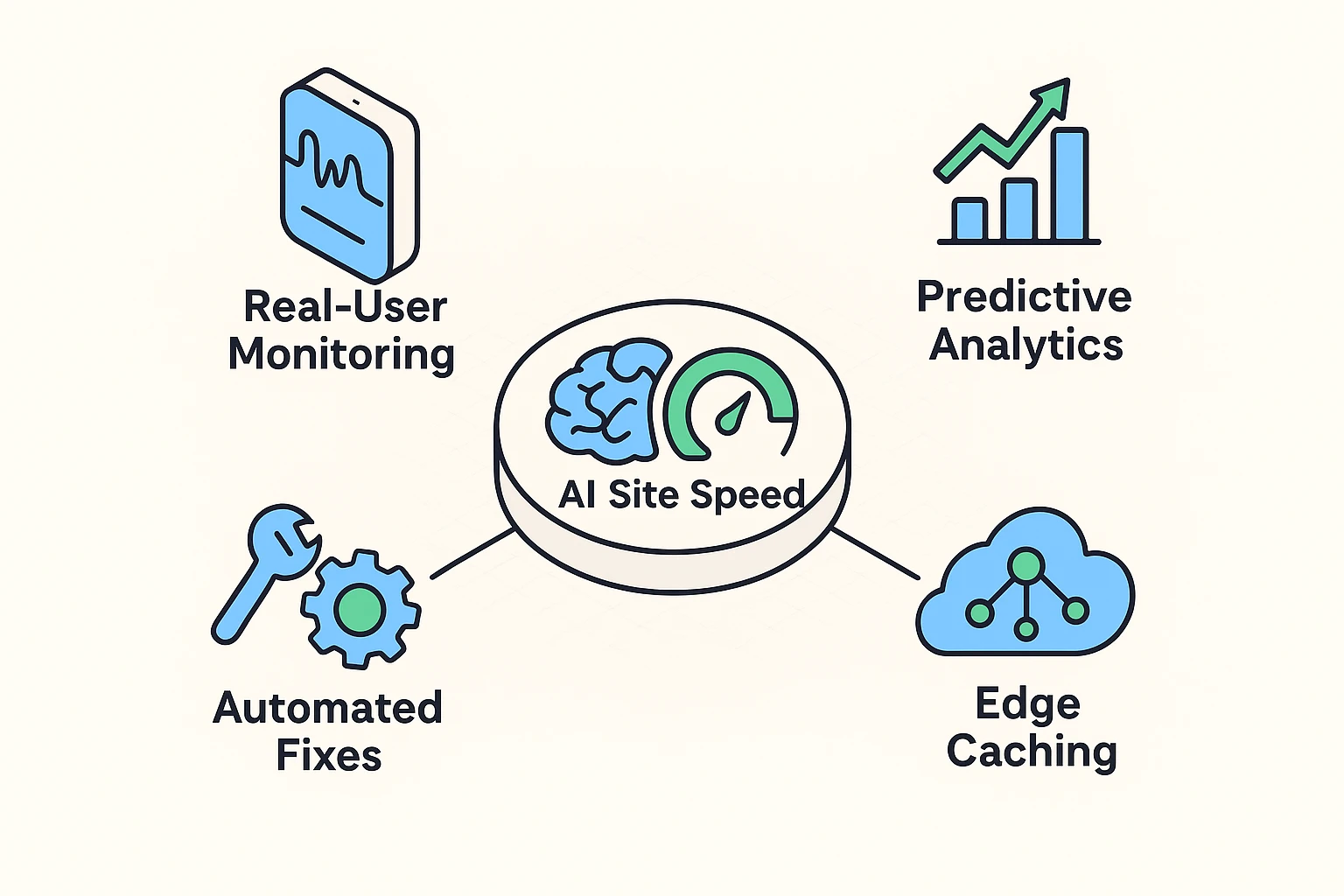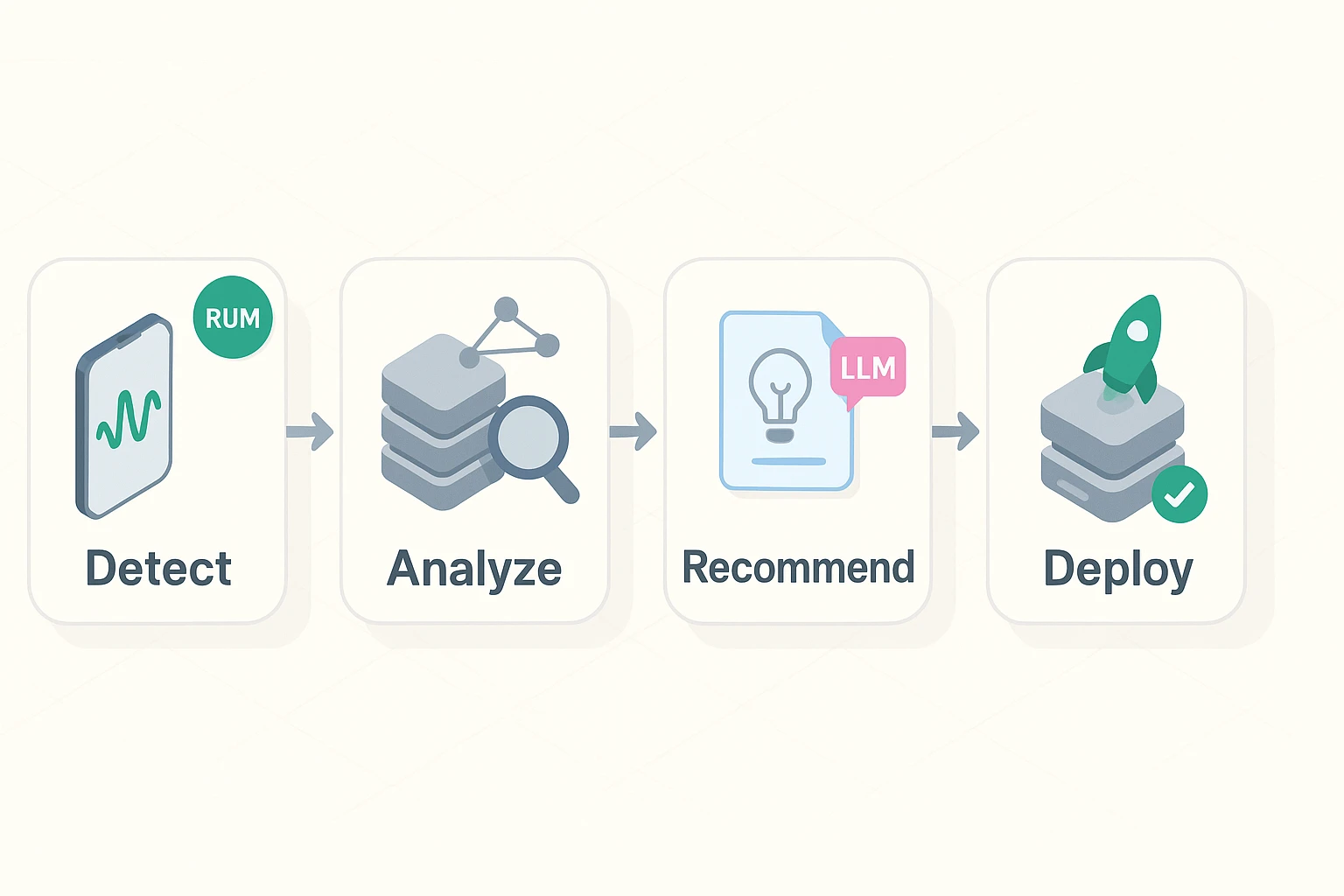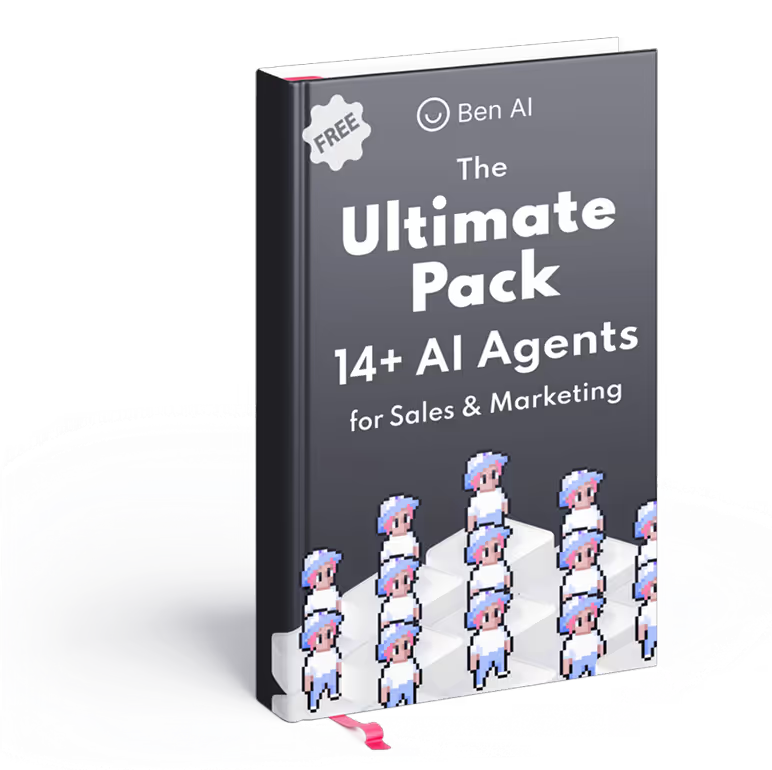AI-Powered Site Speed Analysis Tools: The Definitive Guide for Decision-Makers
Decision-makers navigating the complexities of modern web performance seek robust solutions that deliver tangible results. AI-powered site speed analysis tools represent a crucial advancement, offering automated, predictive, and personalized insights to optimize website performance. These sophisticated platforms are not merely incremental improvements; they redefine how businesses approach user experience (UX), search engine optimization (SEO), and conversion rate optimization (CRO), serving as essential resources for stakeholders throughout the evaluation journey.
What Are AI-Powered Site Speed Analysis Tools?
AI-powered site speed analysis tools are advanced software solutions that leverage artificial intelligence (AI) to identify, diagnose, and resolve website performance bottlenecks automatically. These tools integrate machine learning (ML), large language models (LLMs), natural language processing (NLP), predictive analytics, real-user monitoring (RUM), and edge network technologies to provide comprehensive insights and automated fixes. Their primary goal involves enhancing user experience through faster page loads and stable visuals, ultimately contributing to improved SEO rankings and conversion rates. The market for AI SEO tools is rapidly expanding, with revenue projected to increase from $1.99 billion in 2024 to $4.97 billion by 2033, according to a report cited by SEO.com [3].
The core opportunity in this domain lies in developing holistic, authoritative content assets addressing middle-of-the-funnel user intents, such as detailed tool comparisons, evaluations of advanced AI features, and actionable guidance for webmasters and SEO professionals.

How Do AI Tools Optimize Core Web Vitals?
AI tools fundamentally improve website speed by directly addressing Google's Core Web Vitals (CWV) metrics: Largest Contentful Paint (LCP), Cumulative Layout Shift (CLS), and First Input Delay (FID). These metrics measure perceived loading speed, visual stability, and interactivity, respectively. AI algorithms diagnose performance issues by analyzing vast datasets from real-user interactions and synthetic tests, proactively identifying areas for optimization. This process often involves automated solutions like smart caching, image optimization, and resource prioritization.

Optimizing Largest Contentful Paint (LCP) with AI
AI optimizes Largest Contentful Paint (LCP) by identifying the largest visible element on a webpage and ensuring its rapid delivery. AI systems analyze rendering paths, prioritize critical CSS and JavaScript, and implement advanced image and video compression techniques. They often utilize predictive analytics to pre-load necessary resources based on anticipated user behavior, drastically reducing the time it takes for the main content to appear. This targeted approach ensures that the most important visual element loads quickly, enhancing the user’s perception of speed.
Enhancing Cumulative Layout Shift (CLS) through AI
AI minimizes Cumulative Layout Shift (CLS) by predicting and preventing unexpected content movement on a page. Machine learning models analyze patterns of layout shifts, identifying elements that often cause instability, such as images without dimensions or dynamically injected content. AI tools provide automated solutions, including reserving space for images and ads, ensuring fonts are loaded correctly, and optimizing third-party script execution. These proactive measures ensure a stable and predictable visual experience for visitors.
Improving First Input Delay (FID) via AI Diagnostics
AI improves First Input Delay (FID) by reducing the time it takes for a browser to respond to a user's first interaction. AI diagnostics analyze main-thread activity, identify long-running tasks, and optimize JavaScript execution. These tools prioritize critical scripts, defer non-essential code, and break up large tasks into smaller ones. The result is a more responsive website, as the browser can process user inputs quickly, creating a smoother and more interactive browsing experience.
Top AI-Powered Site Speed Analysis Tools for Comprehensive Optimization
Evaluating AI-powered site speed analysis tools involves assessing their unique capabilities, integration potential, and the specific performance metrics they target. These tools offer diverse approaches to optimizing website speed, ranging from edge delivery to predictive prerendering, providing distinct advantages for various business needs.
Nostra AI: Edge Delivery and Conversion Uplift
Nostra AI excels in AI-driven edge caching with real-time adaptation and rapid, no-code deployment. This platform leverages a global network edge delivery system, distributing content closer to users to minimize latency. According to Nostra.ai [1], Nostra AI provides customers with up to an 8.4% conversion uplift via approximately 30-minute integration. Its strength lies in articulating clear business value and seamlessly integrating with e-commerce platforms, offering solutions that directly translate into improved user experience and increased conversion rates.
SelfMadeMillennials: AI for SEO Content and Site Performance
SelfMadeMillennials focuses on practical, SEO-focused AI tool recommendations, emphasizing the synergy between AI and SEO content. The platform provides insights based on personal experience, guiding users toward tools that enhance E-E-A-T compliance and overall digital visibility. While not solely dedicated to site speed, it highlights tools that address technical SEO and content optimization, which indirectly contribute to site performance. Users seeking a blend of content strategy and performance gains find value in its actionable advice and conversational tone.
Rank Math Blog: WordPress Integration and Real-Time Insights
Rank Math, primarily known for its WordPress SEO plugin, offers integrated speed test insights directly within the WordPress ecosystem. Its blog frequently covers the best website speed test tools, making it a valuable resource for WordPress users. The platform provides real-time speed insights and SEO synergy, benefiting users who prefer a consolidated approach to website management. While it excels in user-friendly features like a frontend speed bar for quick visibility, it may offer less advanced performance diagnostics compared to standalone, dedicated AI speed tools.
Uxify: Predictive Optimization for User Experience
Uxify leverages advanced machine learning and predictive algorithms with a strong UX-centric approach to webpage optimization. The platform focuses on behavioral analysis to enable predictive page prerendering, creating a near-instant navigation experience. Uxify’s strength lies in its deep technical explanations and educational content, which illustrate how AI applications proactively enhance user experience. This tool appeals to advanced webmasters prioritizing a cutting-edge approach to anticipate user needs and deliver lightning-fast content.
Leveraging Other Key Entities: Semrush, GTmetrix, Hotjar
Many established digital marketing and analytics platforms integrate AI features that complement dedicated site speed analysis tools. Semrush, a comprehensive SEO and marketing platform, incorporates AI into its various tools, including site audits and competitive analysis, contributing to overall SEO visibility in AI-powered search engines. GTmetrix, a popular website performance analyzer, offers detailed diagnostics and recommendations, enhancing its value through increasingly sophisticated data processing. Hotjar utilizes AI-driven heatmaps and session recordings for user behavior analytics, allowing businesses to understand how speed impacts engagement and conversion rates, with AI-powered heatmaps driving up to 25% conversion increases according to SuperAGI [5]. These tools provide essential data and insights that, when combined with dedicated AI site speed solutions, create a robust optimization strategy.
The Tangible Business Impact of AI-Driven Site Speed Optimization
AI-driven site speed optimization delivers significant business benefits, translating directly into improved financial performance, enhanced market positioning, and operational efficiency. The strategic adoption of these technologies is not merely a technical upgrade; it is a critical investment in a company’s digital future.

Increasing Conversion Rates and User Engagement with AI
AI-powered site speed optimization directly increases conversion rates and user engagement by delivering faster, more stable, and more responsive website experiences. Research from SelfMadeMillennials [2] indicates that 65% of companies report better SEO results after AI tool adoption, a strong indicator of improved user interaction metrics. Faster loading times reduce bounce rates and keep users on the site longer, encouraging deeper engagement with content and products. This enhanced experience translates into higher conversion rates for purchases, lead generation, or subscriptions. According to Nostra.ai [1], their AI solutions can provide up to an 8.4% conversion uplift, demonstrating the direct financial impact of speed.
Driving SEO Rankings and Organic Traffic Through AI Performance Gains
AI-driven performance gains significantly boost SEO rankings and organic traffic. Google prioritizes fast-loading, user-friendly websites, especially those that excel in Core Web Vitals. AI tools ensure these critical metrics are continuously optimized, signaling to search engines that a website offers a superior user experience. This consistent optimization improves search visibility, leading to higher organic rankings, increased click-through rates, and a greater volume of qualified organic traffic. Ultimately, this creates a virtuous cycle where better performance leads to better rankings, attracting more users.
Achieving Operational Efficiency with Automated AI Optimizations
Operational efficiency improves substantially with automated AI optimizations. AI tools streamline the complex, often manual, tasks associated with website performance tuning, such as image compression, code minification, and caching configuration. This automation frees up development and marketing teams, allowing them to focus on strategic initiatives rather than reactive problem-solving. A study from SQ Magazine [10] indicates that 73% of organizations use or pilot AI, with 35% in full deployment, underscoring the widespread adoption driven by efficiency gains. By proactively addressing performance issues, AI reduces maintenance overhead and minimizes the risk of costly downtime.
Emerging Trends in AI Website Optimization: Beyond Speed
The landscape of AI website optimization is continuously evolving, extending beyond mere speed enhancements to encompass broader aspects of digital strategy. These emerging trends reshape how businesses approach user experience, SEO, and overall web presence. For more information about future AI SEO automation trends, explore detailed analyses on the subject.
AI SEO Integration and Visibility in AI Search Engines
AI SEO integration is paramount for ensuring visibility in the evolving AI search engine landscape. Modern search algorithms, like Google's RankBrain, heavily rely on AI and machine learning to interpret user intent and deliver highly relevant results. AI-powered tools assist in semantic content development, identifying entity relationships, and optimizing content for topic comprehensiveness over keyword density. This strategic alignment ensures that content is not only fast but also highly relevant and authoritative, making it discoverable by sophisticated AI search interfaces. Businesses can learn more about comprehensive AI SEO automation guides and AI content generation and optimization strategies. Effective automated on-page SEO with AI further enhances visibility by ensuring all technical elements are optimized for AI interpretation, including AI schema markup automation.
Predictive Page Prerendering and User Behavior Analysis
Predictive page prerendering, driven by AI and advanced user behavior analysis, is an emerging frontier in website optimization. These systems analyze user navigation patterns and typical journeys to anticipate which pages a user might visit next. The AI then prerenders these anticipated pages in the background, making subsequent navigation appear nearly instantaneous. This proactive approach significantly enhances perceived speed and user flow, reducing friction and boosting engagement. Tools like Uxify exemplify this trend, focusing on behavioral insights to deliver a truly predictive and seamless user experience.
AI-Enhanced Security and Fraud Prevention in Optimization
AI plays a growing role in integrating security and fraud prevention directly into performance optimization efforts. Malicious bots and fraudulent traffic can significantly degrade website performance, consuming resources and skewing analytics. AI models detect and mitigate these threats in real-time, distinguishing legitimate user traffic from malicious activity. By identifying and blocking fraudulent interactions, AI not only protects website integrity but also optimizes resource allocation, ensuring that legitimate users experience faster load times and better performance. This dual benefit underscores the comprehensive nature of modern AI optimization solutions.
Implementing AI Site Speed Tools: A Roadmap for Non-Technical Users
Implementing AI site speed tools appears complex; however, a clear roadmap simplifies the process for non-technical users. The key involves understanding the stages of selection, deployment, and ongoing management, ensuring that technical sophistication remains accessible.
Selecting the Right AI Site Speed Tool for Your Business
Selecting the right AI site speed tool for a business requires evaluating specific needs, budget, and desired outcomes. Non-technical users should prioritize tools offering intuitive interfaces, clear reporting dashboards, and comprehensive support. Consider tools that explicitly address your website's primary challenges, such as large image files, slow server response times, or excessive third-party scripts. Utilize free trials and demos to assess user-friendliness and the relevance of the insights provided. Focus on tools that offer automated solutions with minimal manual intervention, aligning with a streamlined, hands-off approach.
Seamless Integration and No-Code Deployment Strategies
Seamless integration and no-code deployment strategies are critical for non-technical users adopting AI site speed tools. Many modern AI optimization platforms offer simple installation processes, often requiring just a few lines of code or a plugin installation for popular content management systems (CMS) like WordPress. These tools frequently feature intuitive dashboards that guide users through configuration without requiring deep technical knowledge. The emphasis on "no-code" ensures that users can implement sophisticated performance enhancements quickly and effectively, minimizing potential technical hurdles. For detailed insights, explore resources on no-code AI technical SEO automation.
Continuous Monitoring and Adaptation with AI Insights
Continuous monitoring and adaptation with AI insights ensure sustained website performance. After initial deployment, AI tools consistently analyze real-user data, identifying new performance opportunities or emerging issues. Non-technical users can leverage simplified dashboards to understand these insights, which often highlight actionable recommendations in plain language. The AI continuously adapts its optimization strategies based on changing user behavior, website content, and search engine algorithms. This ongoing, intelligent adjustment means the website remains optimized without constant manual intervention, providing long-term benefits with minimal effort.
Frequently Asked Questions About AI-Powered Site Speed Analysis
Addressing common questions about AI-powered site speed analysis clarifies its value and operational impact for decision-makers.
What are Core Web Vitals, and why do they matter for site speed?
Core Web Vitals are a set of specific metrics that Google uses to quantify the user experience of a webpage, focusing on loading, interactivity, and visual stability. These metrics include Largest Contentful Paint (LCP), Cumulative Layout Shift (CLS), and First Input Delay (FID). They matter profoundly for site speed because Google integrates them into its ranking factors. Websites that perform well on Core Web Vitals typically receive preferential treatment in search results, while poor performance negatively impacts SEO and user retention. Optimizing these vitals ensures a better user experience and stronger search engine visibility.
How do AI tools fundamentally improve website speed compared to traditional methods?
AI tools fundamentally improve website speed compared to traditional methods by offering automated, predictive, and real-time optimization. Traditional methods often involve manual audits, static recommendations, and reactive fixes. In contrast, AI systems continuously monitor real-user interactions, identify subtle patterns of performance degradation, and autonomously implement optimizations. They apply machine learning to predict user behavior for prerendering pages or dynamically adjusting caching strategies, providing a level of precision and continuous adaptation that manual processes cannot match.
Can AI fully replace traditional SEO and site audit processes?
No, AI cannot fully replace traditional SEO and site audit processes; instead, it augments and enhances them. AI tools excel at automating data analysis, identifying technical issues, and generating optimization recommendations at scale. However, human expertise remains crucial for strategic planning, understanding nuanced user intent, interpreting complex data, and making creative content decisions. AI acts as a powerful co-pilot, handling repetitive tasks and providing data-driven insights, while human SEO specialists provide the strategic direction and contextual understanding. Integrating AI SEO marketing stack integration often involves a blend of automated and manual efforts.
How does a business choose the most suitable AI site speed tool?
A business chooses the most suitable AI site speed tool by aligning the tool's capabilities with its specific website needs, technical expertise level, and budget. Evaluate tools based on their primary focus (e.g., edge delivery, predictive analytics, Core Web Vitals optimization), ease of integration, reporting clarity, and customer support. Consider whether the tool offers a no-code solution for non-technical teams or deeper technical controls for developers. Review case studies and customer testimonials to understand real-world results and ensure the tool scales with business growth.
What is the impact of AI site speed optimization on conversion rates and user engagement?
AI site speed optimization significantly impacts conversion rates and user engagement by creating a frictionless and highly responsive website experience. Faster loading times directly reduce bounce rates, as users are less likely to abandon a slow-loading page. A more stable and interactive interface encourages deeper exploration of content, product pages, and calls to action. According to Nostra.ai [1], AI optimization can deliver up to an 8.4% conversion uplift, demonstrating its direct positive effect on business outcomes. Improved speed creates a positive feedback loop, fostering trust and encouraging repeat visits and conversions.
Does Google penalize websites optimized with AI tools?
No, Google does not penalize websites optimized with AI tools; instead, it rewards them. Google's algorithms prioritize fast, user-friendly, and high-quality websites, and AI tools are designed to achieve these very goals. The concern arises when AI is used to generate low-quality, spammy, or duplicate content, which Google's algorithms are designed to detect and penalize. Legitimate AI-powered site speed optimization, which improves Core Web Vitals and overall user experience, directly aligns with Google's guidelines and is therefore beneficial for SEO.
Conclusion
AI-powered site speed analysis tools are indispensable for businesses seeking to enhance their digital presence, improve user experience, and secure competitive advantages. These tools offer comprehensive solutions for optimizing Core Web Vitals, driving SEO performance, and increasing conversion rates through intelligent automation and predictive analytics. For decision-makers, understanding and strategically adopting these advanced platforms ensures long-term success in an increasingly demanding digital landscape.
Join Our Growing AI Business Community
Get access to our AI Automations templates, 1:1 Tech support, 1:1 Solution Engineers, Step-by-step breakdowns and a community of forward-thinking business owners.

Latest Blogs
Explore our latest blog posts and insights.


